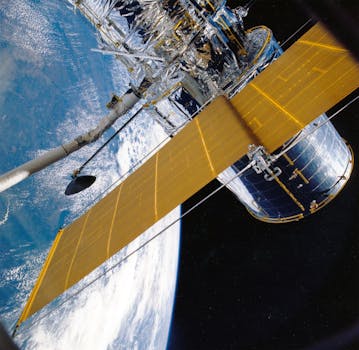
GEO Satellites: Understanding the Technology and Applications
GEO satellites, or Geostationary Earth Orbit satellites, are a type of satellite that orbits the Earth at an altitude of approximately 36,000 kilometers. They are stationed above the equator and remain fixed in relation to a specific point on the Earth’s surface, allowing them to provide continuous coverage of a particular region. GEO satellites play a crucial role in modern telecommunications, providing global coverage and enabling a wide range of applications, including telecommunications, weather forecasting, and navigation.
How GEO Satellites Work
GEO satellites work by transmitting and receiving signals to and from Earth-based stations. They are equipped with transponders, which are devices that receive signals from Earth-based stations, amplify them, and then re-transmit them back to Earth. The signals transmitted by GEO satellites are received by Earth-based stations, which can be used for a variety of purposes, including telecommunications, broadcasting, and navigation. GEO satellites are powered by solar panels, which provide the necessary energy to operate the satellite’s systems.
Applications of GEO Satellites
GEO satellites have a wide range of applications, including telecommunications, weather forecasting, and navigation. They are used to provide internet connectivity, mobile phone coverage, and television broadcasting services to remote and underserved areas. GEO satellites are also used for weather forecasting, providing images of cloud patterns, storm systems, and other weather phenomena. Additionally, they are used for navigation, providing location information and timing signals for GPS and other navigation systems.
Advantages and Challenges of GEO Satellites
GEO satellites have several advantages, including global coverage, high bandwidth, and reliability. They are also relatively low-cost compared to other types of satellites. However, GEO satellites also have several challenges, including signal latency, interference, and orbital congestion. Signal latency occurs when there is a delay between the time a signal is transmitted and the time it is received, which can be a problem for applications that require real-time communication. Interference occurs when signals from other satellites or Earth-based stations interfere with the signals transmitted by the GEO satellite. Orbital congestion occurs when there are too many satellites in a particular orbit, which can cause collisions and other problems.
Future of GEO Satellites
The future of GEO satellites is promising, with several new technologies and applications on the horizon. One of the most significant trends is the development of high-throughput satellites, which are designed to provide faster and more reliable internet connectivity. Another trend is the use of GEO satellites for 5G and other next-generation wireless networks. Additionally, there is a growing interest in using GEO satellites for Earth observation and other scientific applications.




